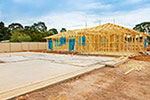Expert eyes see dollars you don’t
The deductions a site inspection will find
An essential part of the process in maximising a depreciation claim for an investment property is a thorough site inspection performed by a depreciation specialist.
When a depreciation specialist visits a property they utilise their knowledge of all of the items that are deductible and available to claim.
This knowledge is recognised by the Australian Taxation Office (ATO) under Tax Ruling 97/25, in which Quantity Surveyors are listed as one of a few professionals able to estimate the cost of a building and the items contained within it for depreciation purposes.
The graphic above shows some of the deductible items found and the first year depreciation amount available to an investor.
From the example, we can see that this investor would be eligible to claim a total deduction of $4,420 in the first financial year alone just for the items featured.
Structural items claimed as capital works deductions equate to $2,283 of these deductions, while plant and equipment assets represent $2,137 of the deductions available to be claimed. Additional depreciation deductions can also be claimed for the flooring, doors, ceilings and joinery items contained within the property.

A depreciation specialist will find deductions in all corners of your investment property

During a site inspection, a depreciation specialist will photograph every item they see and take detailed notes and measurements. This ensures the maximum deductions will be obtained when preparing a depreciation schedule for the owner.
When choosing a provider, it is important for investors to ensure that a thorough site inspection will be included. Some providers outsource the inspection to contractors, which can be problematic and reduce accountability if the report is ever questioned by the ATO. It may appear as though they are getting a great price, but unless the inspector knows exactly what to look for, the initial saving in the schedule fee will be outweighed by the lost deductions each year for the life of the property.





























